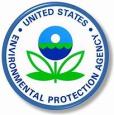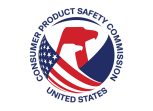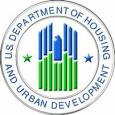Laws and Regulations
Laws and regulations governing the prevention of lead poisoning
A number of State and Federal laws have been passed aimed at preventing lead poisoning. These laws address a variety of lead hazards found in our environment including lead in paint, dust and soil; lead in water; and lead in consumer products. The State of New Hampshire is addressing lead poisoning prevention under these laws in many ways, including issuing and enforcing Orders of Lead Hazard Reduction, testing children for lead, case management for individuals with elevated lead levels, licensing lead professionals, and educating the community to assist them in compliance with the regulations and general lead awareness.
The State of New Hampshire Lead Statute and Administrative Rules
The New Hampshire State Statute for the Department of Health & Human Services can be found at the General Court Website.
Title X, Public Health, RSA 130-A, Lead Paint Poisoning Prevention & Control
NH Code of Administrative Rules is promulgated by state agencies under the Administrative Procedure Act (RSA 541-A). State Administrative Rules are used to specify the implementation of a statute and have the full force and effect of law.
Federal Laws and Regulations
EPA’s Renovation, Repair and Painting Rule
EPA's Lead Renovation, Repair and Painting Rule (RRP) Rule requires that firms performing renovation, repair and painting projects that disturb lead-based paint in homes, child care facilities and pre-schools built before 1978 be certified by EPA (or an EPA-authorized state), use certified renovators who are trained by EPA-approved training providers and follow lead-safe work practices.
EPA and HUD’s Lead-Based Paint Disclosure Rule
This law requires that potential buyers and renters of housing built prior to 1978 receive certain information about lead and lead hazards in the residence prior to becoming obligated to buy or rent, and provides the opportunity for an independent lead inspection for buyers. Sellers, landlords, and agents are responsible for compliance.
EPA’s Safe Drinking Water Act
The Safe Drinking Water Act (SDWA) was established to protect the quality of drinking water in the U.S. This law focuses on all waters actually or potentially designed for drinking use, whether from above ground or underground sources.
HUD’s Lead Safe Housing Rule
This regulation was established to protect young children from lead-based paint hazards in housing that is financially assisted by the Federal government or sold by the government. The regulation establishes requirements that control lead-based paint hazards in such housing. It applies only to housing that was built before 1978; in that year, lead-based paint was banned nationwide for consumer use.
Consumer Product Safety Commission- Lead in Consumer Products
The U.S. Consumer Product Safety Commission (CPSC) is charged with protecting the public from unreasonable risks of injury or death associated with the use of thousands of types of consumer products.
OSHA’s Lead in Construction Standard
Under OSHA’s Lead in Construction Standard, employers are required to protect workers from lead exposure. The lead standards establish a permissible exposure limit, set an action level at which an employer must begin specific compliance activities, including blood lead testing for exposed workers. The lead standards also include provisions such as medical surveillance, exposure monitoring, and hygiene facilities and practices that are critical in preventing lead exposure and elevated blood lead levels.
US Food and Drug Administration- Lead in Food
The FDA monitors and regulates levels of lead in certain foods, food wares, dietary supplements, and cosmetics, because of its potential to cause serious health problems.








